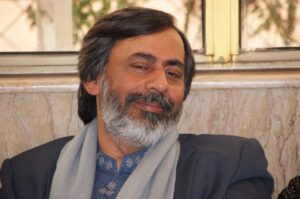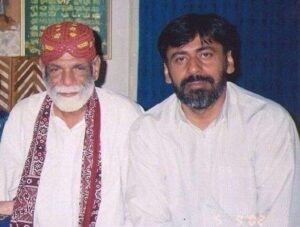Cure Glaucoma
Introduction
Glaucoma is a silent thief of sight, often lurking unnoticed until it’s too late. In this article, we will explore the world of glaucoma—understanding its nature, investigating potential causes, discussing management strategies, and introducing an unconventional approach known as the “Ultimate Remedy.” This unique audio therapy claims to have the power to cure various forms of glaucoma by harnessing the healing potential of sound and intention.
Understanding Glaucoma
The Stealthy Intruder: Glaucoma
Glaucoma is a group of eye conditions that damage the optic nerve, primarily due to elevated intraocular pressure (IOP). This progressive damage can lead to vision loss or even blindness. Common types include open-angle glaucoma and angle-closure glaucoma.
Understanding Causes of Glaucoma
The exact causes of glaucoma are not always clear, but certain risk factors can increase one’s susceptibility:
Age: The risk of glaucoma increases with age, particularly after 40.
Family History: A family history of glaucoma can raise the risk.
High Intraocular Pressure: Elevated IOP is a major risk factor.
Ethnicity: Some ethnic groups, such as African Americans, are at higher risk.
Thin Corneas: Thinner corneas may contribute to glaucoma risk.
Management Strategies for Glaucoma
Managing glaucoma aims to reduce IOP and slow down the progression of the disease:
Medication: Eye drops or oral medications can help lower IOP.
Laser Therapy: Procedures like laser trabeculoplasty can improve drainage.
Surgery: In severe cases, surgical interventions may be necessary.
Regular Eye Exams: Routine check-ups can catch glaucoma in its early stages.
Lifestyle Modifications: Lifestyle changes like exercise and a healthy diet can support overall eye health.
The “Ultimate Remedy” An Alternative Approach
The “Ultimate Remedy” introduces an unconventional approach to managing glaucoma. This unique audio therapy claims to have the power to cure various forms of glaucoma by harnessing the healing potential of sound and intention.
How to Use the “Ultimate Remedy” for Glaucoma
If you decide to explore the “Ultimate Remedy” as a potential remedy for glaucoma, follow these steps:
Download the Audio: Visit the designated website and download the “Ultimate Remedy” audio from the provided links.
Follow Instructions: Pay close attention to the instructions on how to use the audio. Specifics of its usage are not detailed in this article, so it’s crucial to fully understand the recommended process.
Contact for Help: For any questions or assistance, you are encouraged to reach out to “help@mastmasthealers.com.”
Happy Patients
Years since day one
%
Satisfaction
Testimonial
How to Listen to the Ultimate Remedy:
Download the Ultimate Remedy audio from our website or app. It’s free and accessible to all.
- Choose a quiet, comfortable space where you won’t be disturbed.
- Close your eyes and visualize yourself in the presence of your higher power or the essence of the universe.
- Listen to the audio with great concentration and closed eyes.
- After the audio is finished, open your eyes and take half a glass of water.
- Close your eyes again and say “your name” or a word that represents your belief (such as “God”, “Universe”, or “Love”) three times in your heart.
- Drink the water with closed eyes in three sips.
- For optimal results, it’s recommended to listen to the Ultimate Remedy three times a day (morning, evening, and before sleeping) for seven consecutive days.
About the Creator – Syed Safdar Hussain Bukhari
Introduction and Early Life
Syed Safdar Hussain Bukhari, also known as Kakian Wali Sarkar, was a unique example of kindness, devotion, and tenacity. Born on May 6th, 1940, he dedicated his life to serving humanity and providing relief to those suffering from various ailments.

Social Work and Spiritual Journey
Between 1960-1980, he engaged in social work by undertaking road repairs, establishing schools, and arranging medical supplies in Lilla Town. In 1990, he left his ancestral home and family wealth to move to Lahore, where he comforted the depressed and saddened through mystic dance and music.
The Ultimate Remedy
In 1998, Baba Bukhari’s research led to the discovery of “The Ultimate Remedy,” a blessed audio that he believed could cure physical, psychological, spiritual, and supernatural problems. The remedy involved listening to the audio three times a day for seven consecutive days, followed by a specific water ritual. This method claimed to cure various ailments, including coronavirus, AIDS, cancer, drug addiction, worldly problems, and psychological issues.
Legacy and Death
Baba Bukhari’s research and unconditional love left a lasting impact on humanity, providing positive thinking, peace of mind, health, fearless life, and an example of love and compassion. He passed away on February 8th, 2005, leaving behind a legacy of healing through “The Ultimate Remedy.”

His spiritual successor is Syed Baba Jaan
According to Baba Bukhari (RA), his spiritual successor is Mr. Shakir Uzair, also known as Syed Baba Jaan . As the chosen heir to Baba Bukhari’s spiritual legacy, Syed Baba Jaan carries forward the teachings and practices that have been passed down through generations. Dedicated to serving humanity and promoting healing, Mr. Shakir Uzair continues to spread the message of love, compassion, and the transformative power of the Ultimate Remedy to help countless individuals in their journey towards holistic wellness and personal growth.

